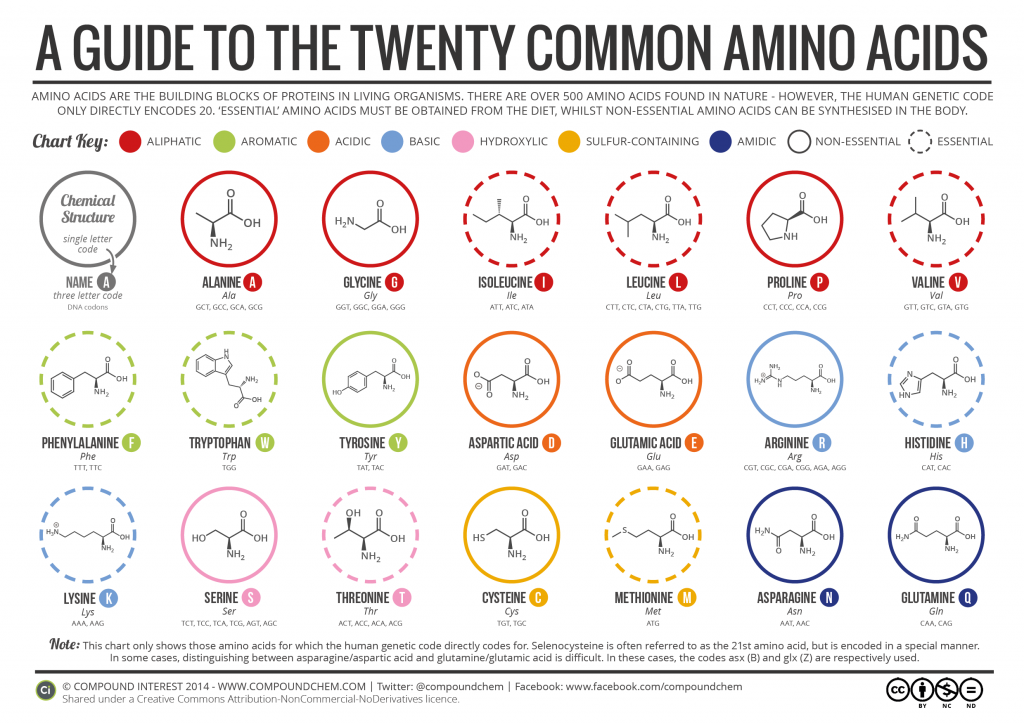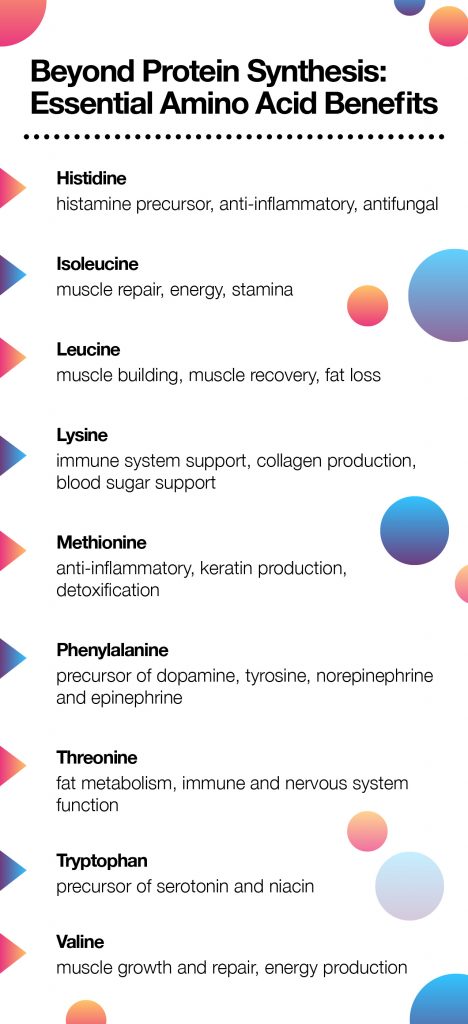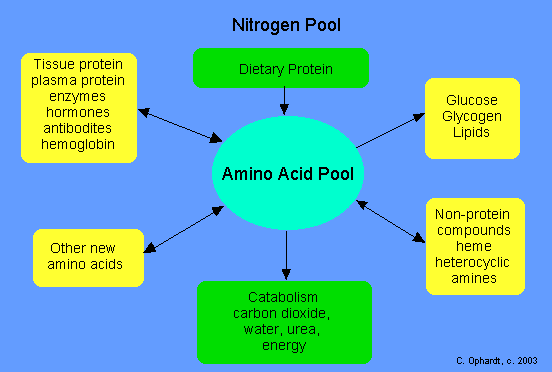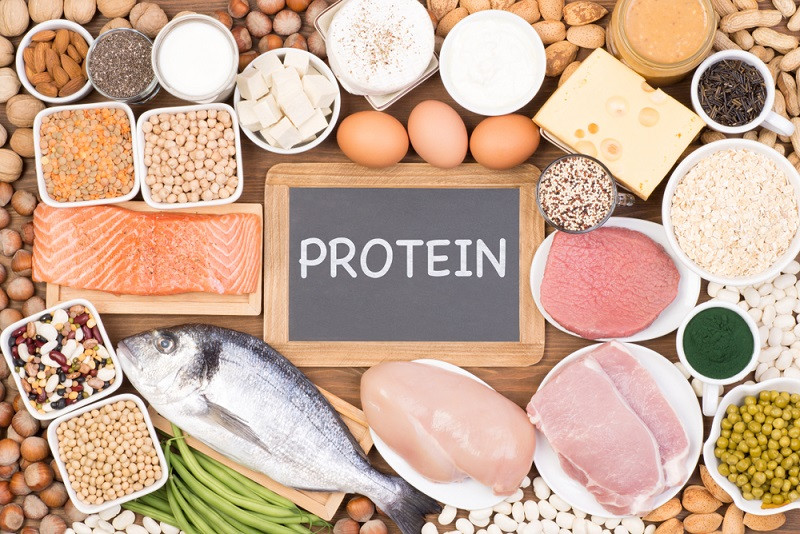and why we need to think about protein differently than carbs and fats
YES. You can use protein for fuel. Glucose. The body will break down protein and utilize it for “fuel” when you do not have carbs/fats (amino acids). HOWEVER!!!!! The body has other plans for protein. We need to remember that proteins are designed different than carbs and fats, they have nitrogen within their structure which changes the game up.
Protein is broken down into amino acids. There are 20 of them. 8 of them are essential. For more information on that, visit one of the below links.

The body is DESIGNED to use Protein to do other CRITICAL functions than to provide fuel for the body.

THE CRITICAL ROLE OF THE AMINO ACID POOL IS TO MAINTAIN HOMEOSTATISIS
Amino acid deficiency can result in decreased immunity, digestive problems, depression, fertility issues, lower mental alertness, slowed growth in children, and many other health issues.
Protein is broken down into amino acids, some stay in the muscle protein pool for recycling into new muscle proteins. BCAAs, branched chain amino acids, can be used locally to contribute to energy transfer.
“Amino acid pool”: place of storage for amino acids, either in location/tissue or blood. Adipose tissue triglyceride pool, plasma amino acid pool. There are several amino acid pools in the body.
Some of the amino acids go into the plasma pool to get circulated and used by cells or to the liver to be used for making glucose, ketone bodies, cholesterol, fatty acids or utilized for energy transfer.
This is where you get the ammonia smell, when the body uses amino acids for certain needs, leaving ammonia (toxic if allowed to build up) that needs to be neutralized and secreted from the body. This is where folks with kidney and liver issues struggle with ammonia build up. Unhealthy. So a diet low low in carbs might not be the best thing.

The body is constantly rebuilding itself. Like the skin, you know that the skin changes a lot, fast. Like the skin of a snake. Bones, connective tissue and everything else do the same. Bones take … 18 months to renew. The health of the rebuild depends on intake and nutritional/health status, for example hormonal balance.
- Give our body structure and strength
- Bones, tendons
- Ligaments, cartilage
- Neurotransmitters
- Make many hormones and cell signaling molecules
- Make enzymes
- Make immune chemicals, antibodies/immunoglobins
- Make transport proteins (how things get in and out of cells)
- Many more things
PROTEIN FACT: PROTEINS DO NOT GET STORED
PROTEIN FACT: BONES ARE MOSTLY PROTEIN
PROTEIN FACT: IF WE DO NOT GET ENOUGH PROTEIN AND THE ENERGY DEMANDS ARE HIGH our bodies will canabalize its own muscle tissue, structural proteins, such as bone and connective tissue, prioritize over hormone production and other things. If this deficit goes too long, vital functions will shut down. Sleep hormone production, sex hormone production, stress fractures result, etc.
So how much protein do I need?
1.2 – 1.7g of protein per kg of body mass (170 pound = 130g) American College of Sports Medicine
1.4 – 2.0g of protein per kg of body mass (a bit more) International Society of Sports Nutrition
1.2 – 2.2g of protein per kg of body mass (other recent studies).
- Training hard and frequently
- Heavy Physical Job
- Pregnant, injured or sick, recovering from surgery
- Chronic Physical stress or poor digestion
- Trying to lose weight
The safe upper limit of protein consumption before dangerous for the kidneys and liver is 3.5 to 4.5g per kg daily. 238-306g protein daily. That is A LOT.
The foods in the following list are the most common sources of essential amino acids:
- Lysine is in meat, eggs, soy, black beans, quinoa, and pumpkin seeds.
- Meat, fish, poultry, nuts, seeds, and whole grains contain large amounts of histidine.
- Cottage cheese and wheat germ contain high quantities of threonine.
- Methionine is in eggs, grains, nuts, and seeds.
- Valine is in soy, cheese, peanuts, mushrooms, whole grains, and vegetables.
- Isoleucine is plentiful in meat, fish, poultry, eggs, cheese, lentils, nuts, and seeds.
- Dairy, soy, beans, and legumes are sources of leucine.
- Phenylalanine is in dairy, meat, poultry, soy, fish, beans, and nuts.
- Tryptophan is in most high-protein foods, including wheat germ, cottage cheese, chicken, and turkey
Both animal and plant products, such as meat, eggs, quinoa and soy, can contain all nine essential amino acids and are considered complete proteins.
These are just a few examples of foods that are rich in essential amino acids. All foods that contain protein, whether plant-based or animal-based, will contain at least some of the essential amino acids.
NOTE: Essential amino acids (EAA) supplements can be beneficial for clients restricting energy intake, training very heavy, training fasted or needing peri/post workout recovery.
NOTE: Glutamine supplementation can improve immunity and gastrointestinal health.
NOTE: Arginine supplementation can improve would healing.
NOTE: Lysine supplementation can reduce cold sore severity, frequency, and healing time.
Protein 101 and Plant Based Vs Animal Based Considerations
How Protein Helps with Weight Loss

